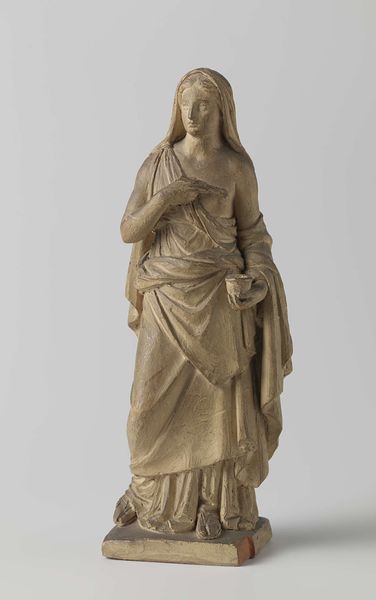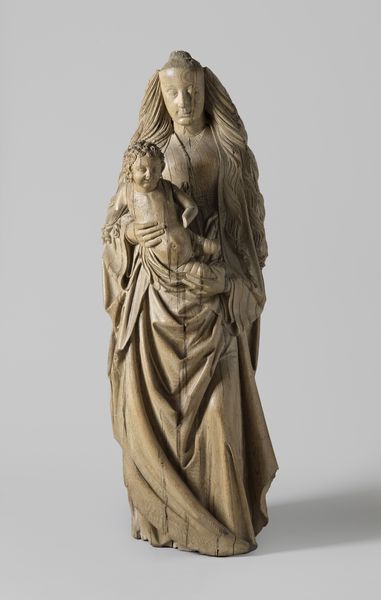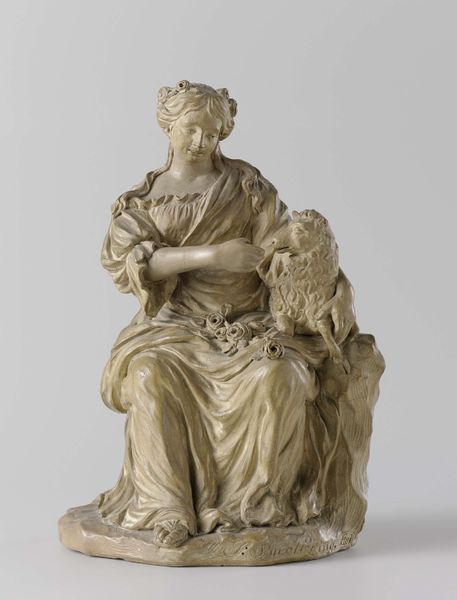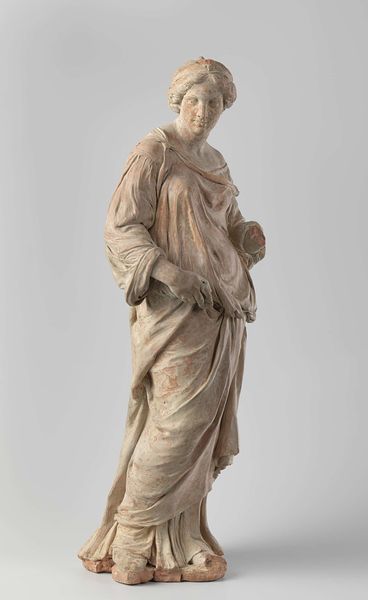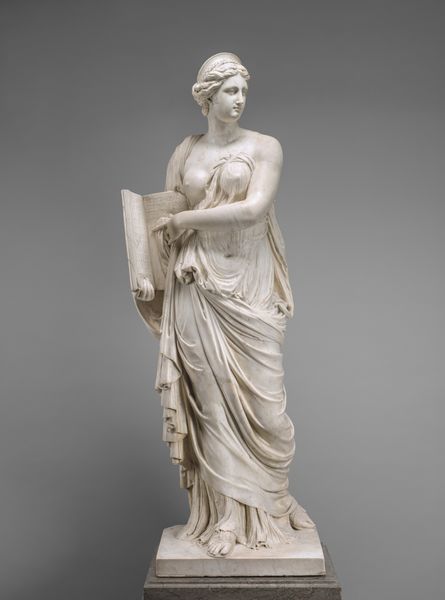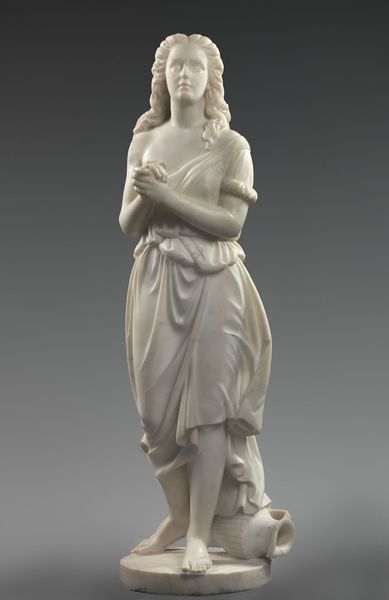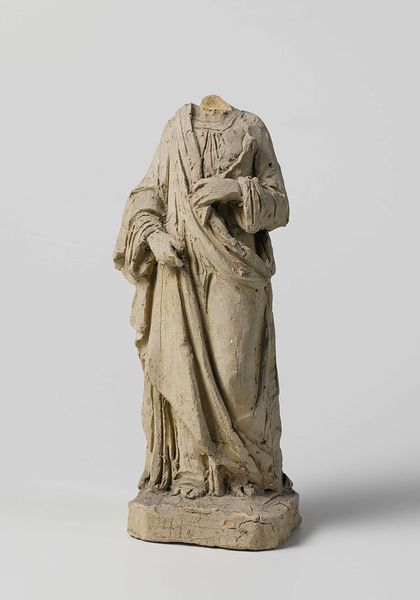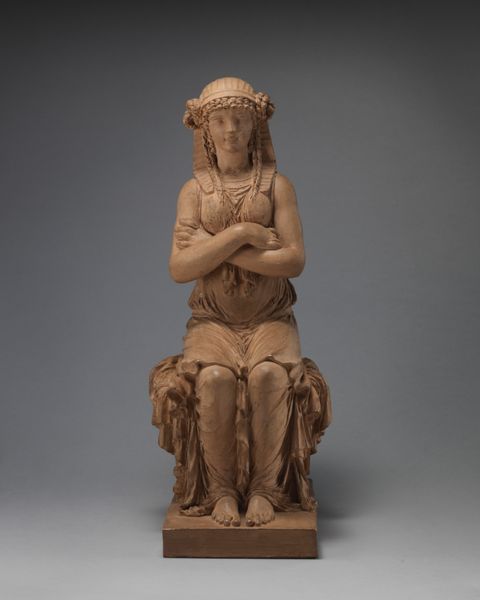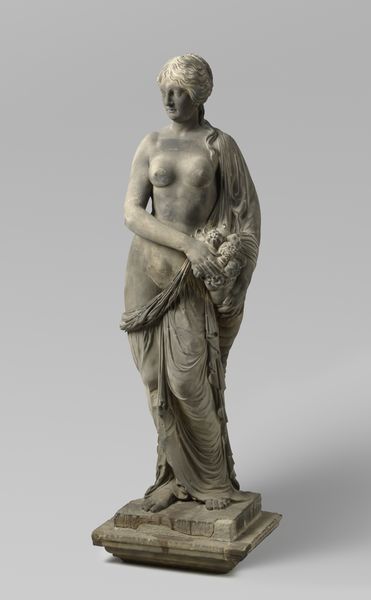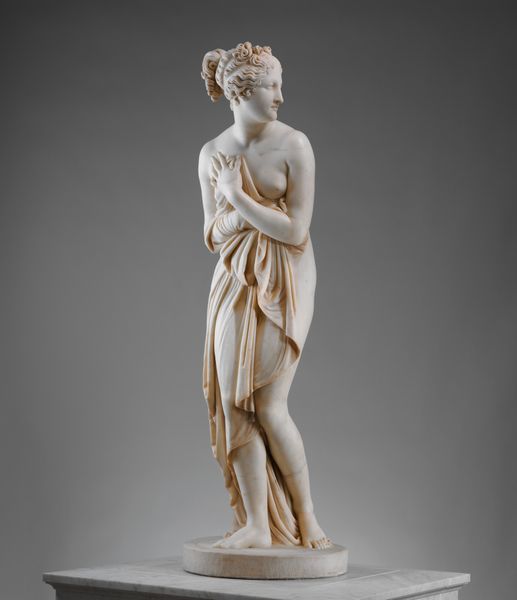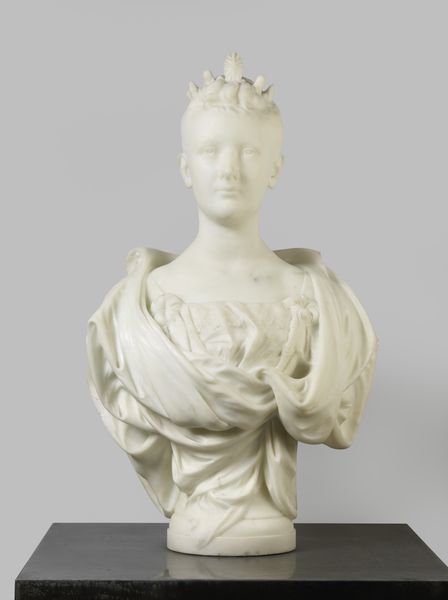
sculpture, wood
#
portrait
#
baroque
#
sculpture
#
figuration
#
sculpture
#
wood
Dimensions: height 33.0 cm, width 15.7 cm, depth 10.8 cm
Copyright: Rijks Museum: Open Domain
Editor: Here we have Pieter Xaveri's wood sculpture, "Young Lady with a Lapdog (Loyalty?)," created in 1673. I’m struck by how formally the young woman is presented. What can we unpack from this Baroque piece? Curator: This sculpture, viewed through a contemporary lens, invites questions about power dynamics. The subject, likely a young noblewoman, is literally elevated, fixed in a pose that speaks to her social position. The lapdog becomes less about "loyalty," and more about status - a symbol of privilege and control, wouldn't you agree? Editor: Absolutely. So, is Xaveri perhaps offering a subtle commentary, embedding a critical perspective within this seemingly straightforward portrait? Curator: The ambiguity is the key. While functioning as a portrait, which upheld certain conventions and flattered patrons, it also allows space for subversive readings. The young woman's rather impassive expression, coupled with the small, contained dog, generates this ambiguity. Editor: It's like the sculpture holds a mirror up to societal structures. Even her elaborate hairstyle and gown signify a certain enforced femininity, no? Curator: Exactly! We must consider gender as a performative act within the context of Baroque aristocracy. These outward displays aren’t innocent but reflect deeply entrenched expectations and limitations imposed on women. How much agency did she truly possess? Editor: Thinking about it that way shifts my perception entirely. It moves beyond being simply a period portrait to a starting point for considering identity and social constraints. Curator: Precisely. It urges us to actively engage with the narratives embedded within the sculpture, rather than passively accepting its surface presentation. Editor: I will definitely look at Baroque portraits differently moving forward. Thanks!
Comments
No comments
Be the first to comment and join the conversation on the ultimate creative platform.
